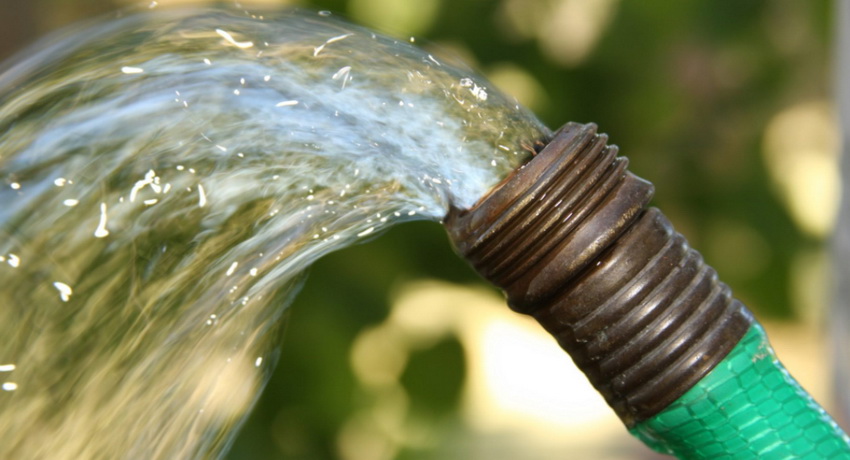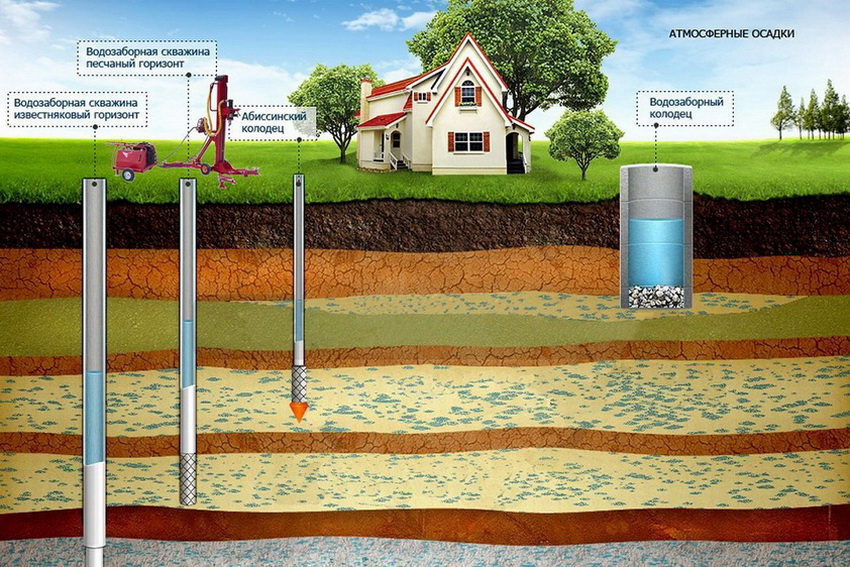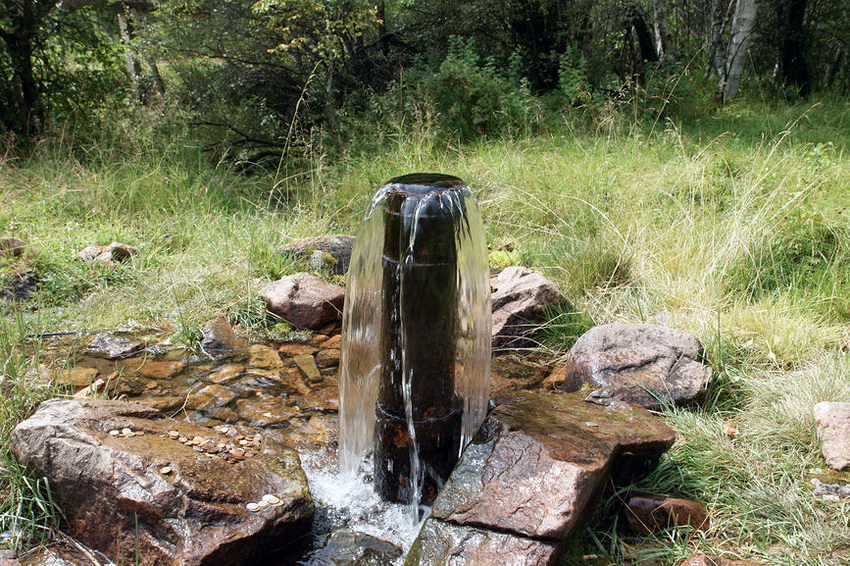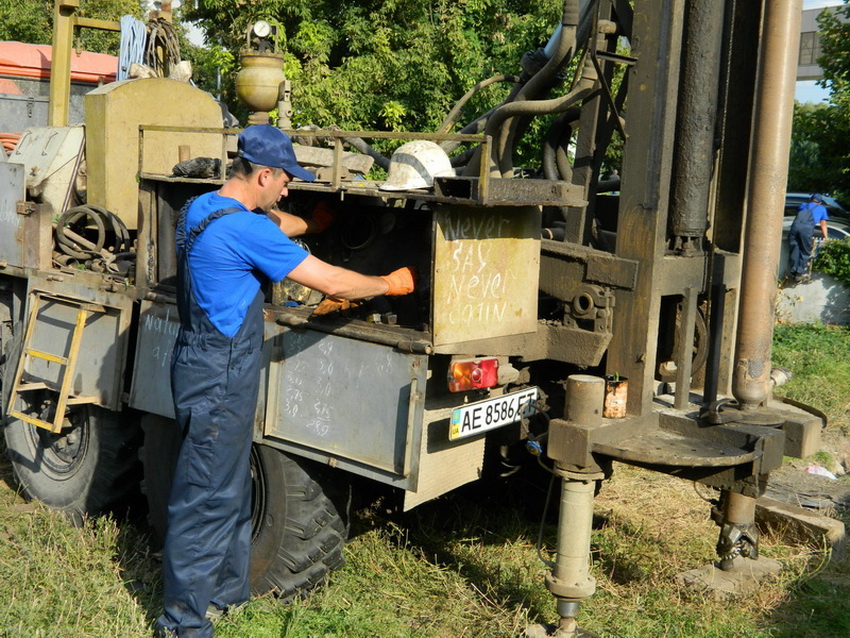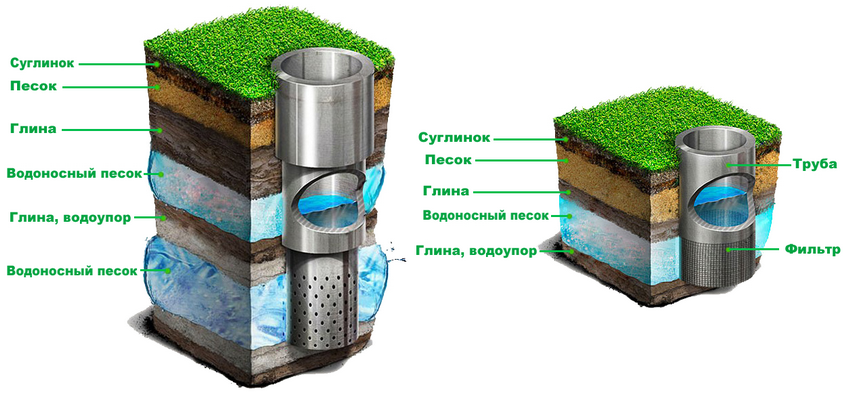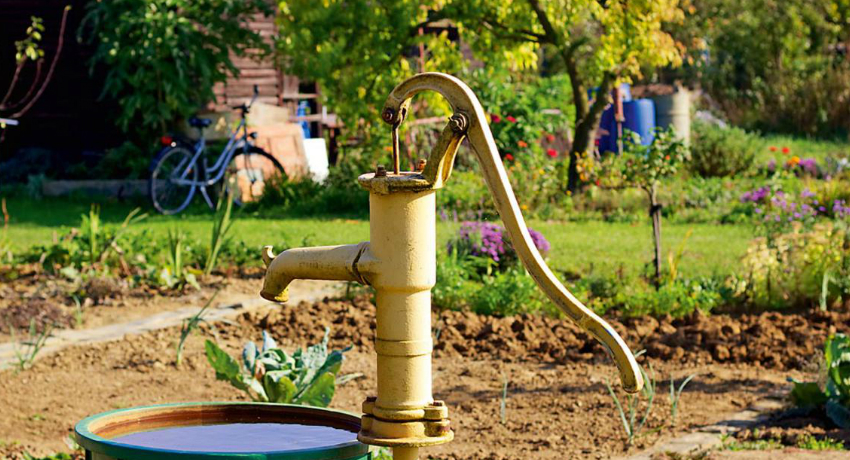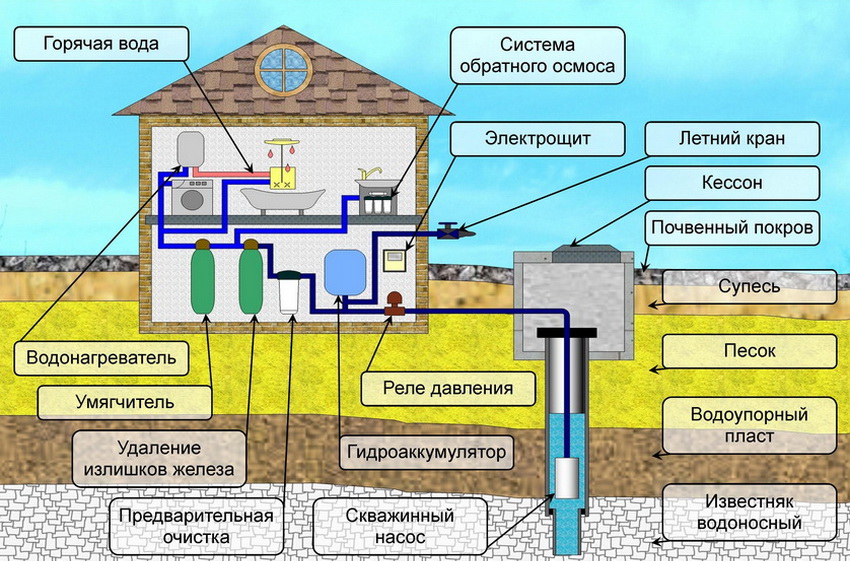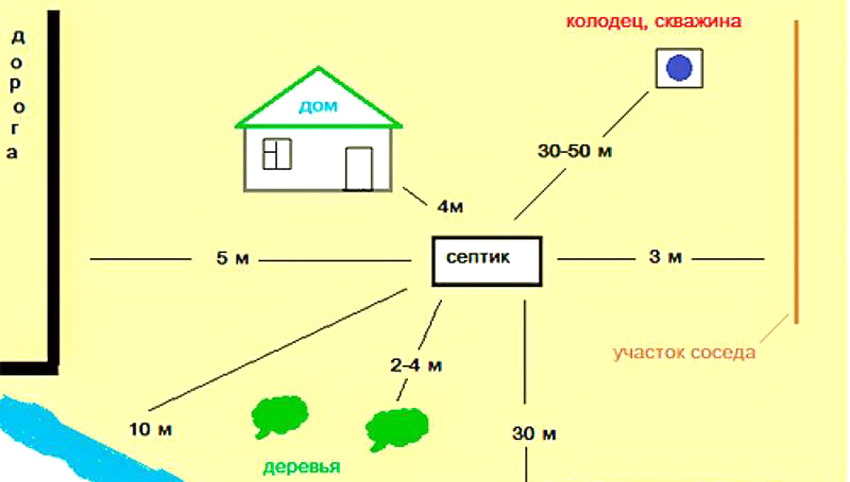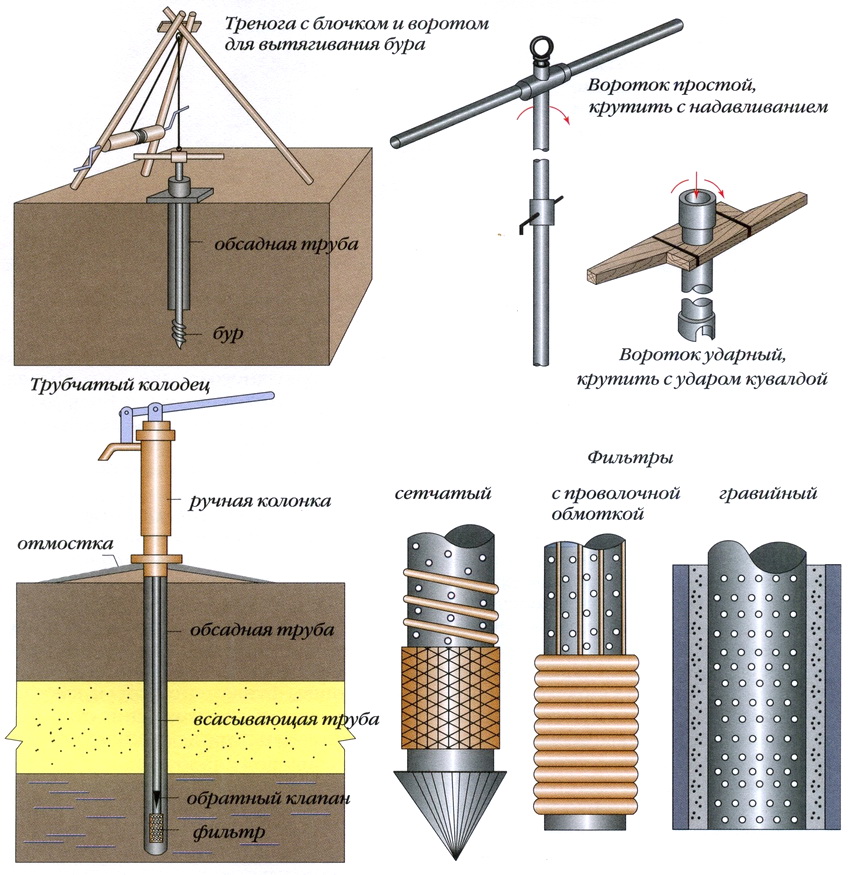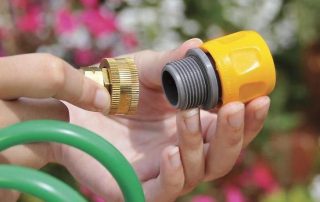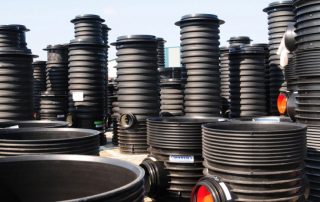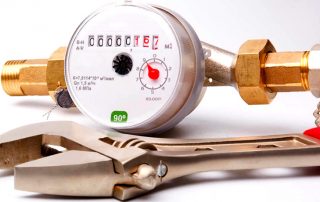Tasty and clean water is a healthy product. City dwellers can get it only by buying bottled water in the store or installing a special water filter. An artesian well, the depth of which can reach up to 250-300 meters, is the optimal solution for owners of country houses. This water is considered the best source of liquid.
Content [Hide]
- 1 What is artesian water: the origin of the liquid
- 2 What is an artesian well: features of the source
- 3 The advantage of drilling artesian water wells
- 4 Artesian well: depth, chemical and organic composition of the liquid
- 5 Artesian well technology and construction
- 6 Artesian well drilling cost: turnkey price
- 7 Artesian well: permit for individuals
- 8 Drilling an artesian well with your own hands: the specifics of work
- 9 Tips and rules for the operation of artesian wells
What is artesian water: the origin of the liquid
Artesian water is a liquid that was formed in ancient times, several hundred thousand years ago. It lies in very deep layers of the earth. By the composition and the map of the distribution of water resources, one can learn about the process of forming the water supply on our planet.
Groundwater is a common resource that mankind actively uses in the course of its life. They are shallow. Depending on the classification, this is the second or third level of aquifers. This liquid actively participates in the water cycle in nature, therefore it is especially highly susceptible to seasonal fluctuations in level. This problem is especially acute during the dry season.
Rain moisture seeps into groundwater, which is partially filtered, passing through rocks, partly bringing harmful substances and compounds that dissolve in water. And ground moisture around industrial facilities contributes to the gradual expansion of the set of chemical elements in water. These are nitrates, heavy metals, radioactive substances, household wastewater and refined products.
In places remote from cities and industrial facilities, groundwater maintains an acceptable level of purity, but pollution can still get into them along with precipitation. In this aspect, artesian water is unconditionally leading in the rating of purity and quality.
What is an artesian well: features of the source
People say that water from an artesian well is the tastiest and most useful in comparison with the liquid from an ordinary well or sand well. This publication will help you understand the question of what a well is, and whether water from it is really so useful.
Wells are different.Drilling to a depth of less than 30 meters is not a way to obtain artesian water.
An artesian well is a borehole, the main purpose of which is to use groundwater from artesian aquifers. According to the scientific definition, an artesian well is a well whose depth is more than 100 m, although in some areas drilling to a depth of 250-300 m is required.
Moreover, the depth in this case is not the most important indicator. After all, the main value of artesian fluid lies in the exceptional purity of the water, since its veins lie between two waterproof layers that protect the fluid from any contamination.
Most often, experts are asked the question of how deep the artesian water is. To get to this object, you may need to drill from 20 to 1000 m. On average, an aquifer up to 100 m deep is punched in the territory of the Russian Federation. But the process of drilling artesian wells is a complicated and costly business from a financial point of view. Therefore, before deciding to extract this useful water, first of all, you need to weigh all the pros and cons.
Useful advice! In Russia, the extraction of groundwater is allowed only after obtaining permission to use the earth's subsoil in a certain area. This is regulated by Article 10, clause 4 of the RF Law "On Subsoil". The special commission that issues a license for an artesian well is also guided by SanPiN 2.1.4.1110-02.
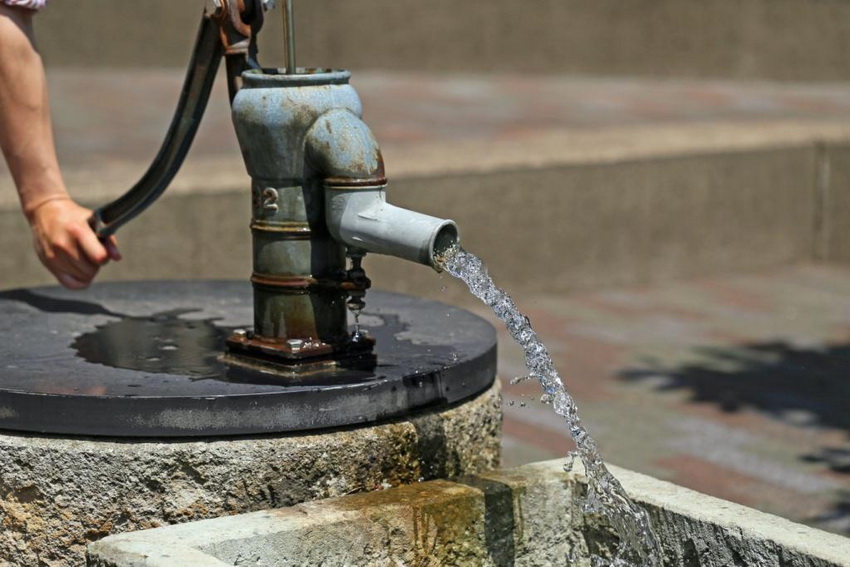
The extraction of artesian water in Russia is regulated by law, therefore, you must first obtain a permit
The advantage of drilling artesian water wells
An artesian well is considered to be the best water source of all. And not in vain, because this source has a number of significant advantages in comparison with other aquifers, namely:
- high well productivity. Limestone is characterized by high fluid loss, which is equal to 1-3 cubic meters per hour. During the operation of an ordinary ground well, it is possible to extract water from 300 to 1000 liters per hour, which is enough to provide a small cottage with liquid (for a family of three). Artesian water sources are capable of producing more than 150 liters per minute. This well can produce a very large amount of water, which makes it possible to provide a garden association or a city microdistrict with liquid;
- continuous water supply. You can place an artesian well anywhere, while the pressure of water will be constantly produced under high pressure. The operating time of the pump does not affect the pressure in any way: even after three hours of operation, the water loss will be equally powerful. If the capacity is 3 cubic meters per hour, then simultaneous operation of 3 to 5 points of water intake is allowed. Moreover, in any of them, the pressure will be excellent. If this is a simple artesian well, the pump will be able to fully supply no more than two points of water consumption. If the need for liquid increases, then the water from the taps will flow in a thin stream;
- works great regardless of the season. The use of an artesian water well is especially important for regions with a long low-temperature period. This is because due to the deep location of the water horizons, a stable and high productivity of water supply is maintained. You will not see anything like this in the work of traditional sand wells. In addition, such a source of water never dries up, does not depend on weather conditions and the amount of precipitation;
- the abundance of the aquifer. If a couple of dozen water supply objects are pierced on one ground aquifer, the water productivity decreases.And in the case of the development of any quarry or the construction of a huge object, the performance of sand wells may even stop altogether. Any such actions have absolutely no effect on the operation of an artesian well;
- water quality. Artesian water is a liquid that is protected from the ingress of chemical components from the external environment, free from microorganisms and pathogens of various diseases. This water is purified by natural groundwater filter... In addition, the mineral saturation of such a liquid is significantly higher than that extracted from soil layers. Also, water from an artesian spring is characterized by a high percentage of iron and hardness salts - based on calcium, magnesium and other macronutrients.
Helpful advice! The service life of an artesian well is 45-50 years for springs with a depth of about 100 m. For small veins, this value decreases to 25-30 years, but subject to constant operation. The source is not silted up, which means that the equipment works without interruptions, and the repair of an artesian well will not take 5-10 years.
Disadvantages of an artesian well device
- Artesian well price. This water supply facility will definitely cost more than any water well or well. At the same time, the following factors affect the formation of the cost of drilling: the season (in winter drilling will be cheaper), the drilling technology used, the price of pumping equipment, caisson, automation. The cost of the services of the burschik is discussed separately.
- The need to install water treatment structures. High iron content is a key deficiency in artesian well water. This component cannot be seen with the naked eye, since the ferrous iron cannot be seen. This means that the water raised up will be crystal clear and transparent. However, some time later, after interacting with air, iron passes into the trivalent phase and precipitates out. It is this kind of sediment that accumulates in kettles, on heating elements of boilers and other heating elements. Given this factor, during the arrangement of an artesian well, it is necessary to install a treatment system. The installation of this equipment is carried out only after conducting a water analysis, which will determine the amount of iron in the liquid.
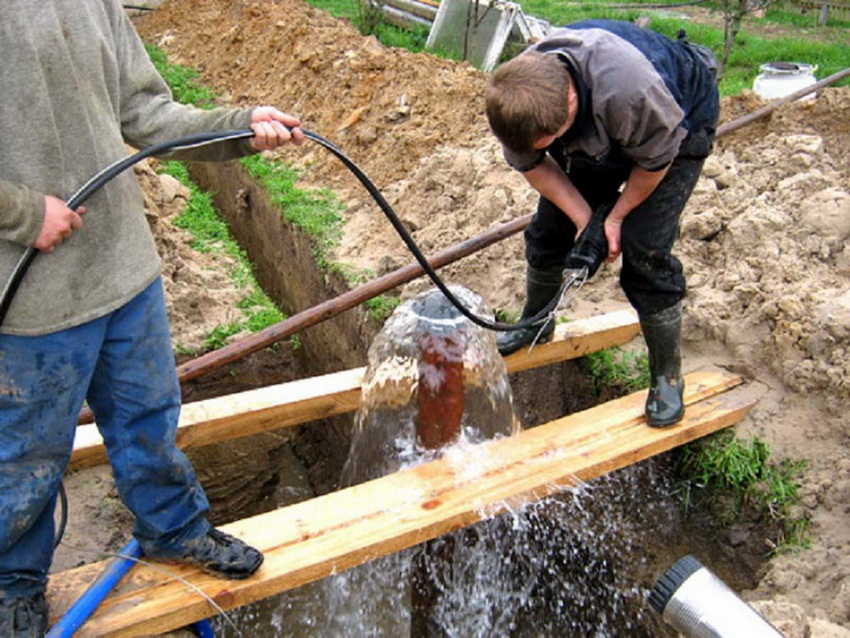
While drilling a well, it is necessary to install a treatment system, since artesian water has a very high level of iron
Artesian well: depth, chemical and organic composition of the liquid
There are no organic components in artesian water, but this does not mean that the water is absolutely harmless. The list and concentration of chemical elements can be much higher than in a ground fluid. Indeed, no matter how deep the source is, the water in it continues to be saturated with various chemicals. Depending on the characteristics of the formations between which the artesian water is located, the liquid can be fresh, mineral or concentrated. And water with such constituents may not be suitable for human consumption.
Experts do not recommend using salt water from an artesian source for irrigation of agricultural land due to the fear of soil salinization. This can make it unsuitable for plowing. Groundwater is more suitable for this, but it often contains pathogens of serious diseases, such as E. coli or Vibrio cholerae.
In addition, chemical analysis shows that very often the amount of nitrates in groundwater is several times higher than all permissible standards. Adults are less susceptible to such water, but if small children are poisoned, it can even be fatal.

Since artesian water lies very deeply, this determines in it the presence of all minerals and trace elements necessary for the body
The peculiarities of deep occurrence of artesian water provide not only a high level of purity, but also an increased concentration of iron, calcium, magnesium and fluorine. If the composition and concentration of substances do not meet the permissible standards, then artesian water is subjected to additional purification to normalize the chemical composition.
Related article:
Water supply of a private house from a well: communication scheme
Water well at the site: system diagram and options for changing it. Step-by-step technology for arranging and connecting communications in the country.
If the artesian vein comes close to the surface and begins to receive recharge from groundwater, then the characteristic indicators of the water change. Therefore, before entering into active use, it is recommended to analyze both groundwater and artesian waters.
The average person does not know how many meters an artesian well will have to be drilled until the mine is filled with clean water. This can be determined using a map of artesian wells, which is compiled for a specific region of the country.
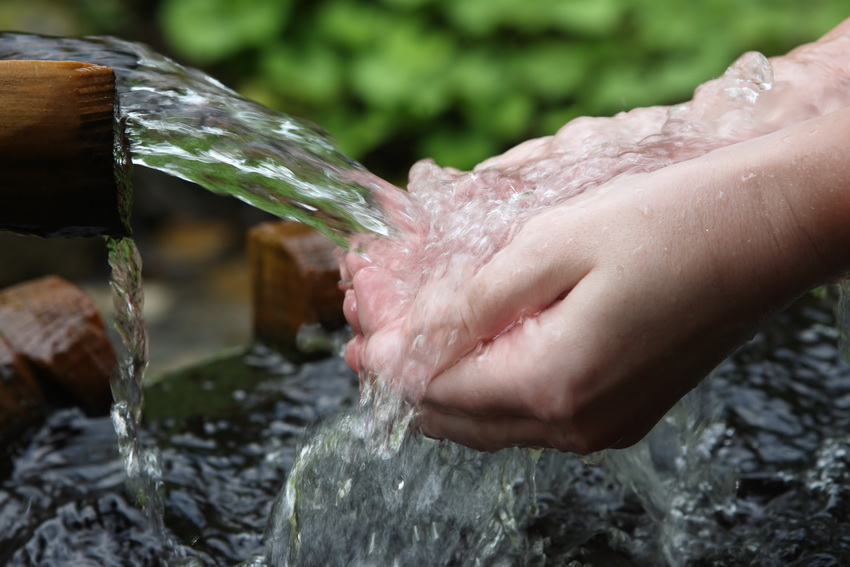
Artesian water does not contain nitrates and other harmful substances that can be found in ordinary groundwater
This information is freely available in open sources and in the databases of specialized organizations that are ready to share this valuable information. But in the event that the drilling depth affects the cost of an artesian well, then one cannot do without a specialist's advice. This is necessary even if it is assumed that the water horizon is not very deep.
Helpful advice! For Moscow and the Moscow region, the depth map of artesian wells is as follows: north - 80-200 m, south - 20-100 m, west - 50-120 m, east - about 250 m.
Artesian well technology and construction
The most inexpensive method for arranging an artesian well is considered to be the use of a small-sized drilling rig (MBU). The advantage of this technology is that artesian water wells can be drilled anywhere. The equipment is characterized by a collapsible design. Drilling rigs, which are based on any truck, on the contrary, may not always have access to the desired location. Very often you have to remove part of the fence, uproot shrubs, cut tree branches, and so on.
Drilling of an artesian well MBU is carried out according to the following plan:
- It is necessary to determine how many meters the depth of an artesian well is in a particular case.
- Execution of the drilling process.
- Arrangement of the column.
- Column flushing.
- Pumping water until crystal clear water flows.
- Installation of pumping equipment at a serviceable water intake point.
Additional steps will be required to complete the well. For example, equip a sump for a pump, select and install an automation unit, complete a well head, connect additional equipment. The full functioning of the artesian well will provide a nearby power source.
Helpful advice! To extract water from an aquifer with a depth of about 100 m, a special type of pumps for artesian wells is required, namely submersible or deep pumps.
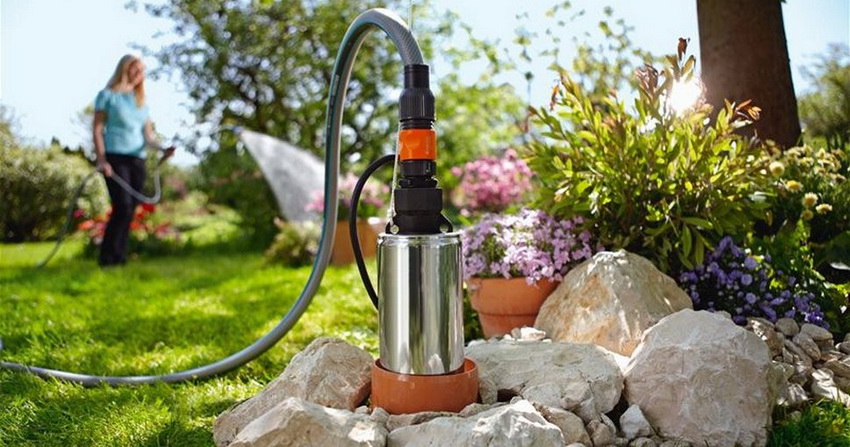
If the artesian well reaches a depth of more than 100 m, a submersible pump is needed to ensure the water pressure
Artesian well drilling cost: turnkey price
The cost of drilling artesian wells depends on the following factors:
- type and depth of the well;
- drilling method;
- arrangement of the source.
The cost of drilling one running meter, including the installation of pipes, on the territory of the Russian Federation is on average:
- pipes of Steel 20 grade with a diameter of 133 mm - from 1.8 thousand rubles;
- with the installation of a food-grade polymer inside the casing - from 2.1 thousand rubles;
- pipes of Steel 20 grade with a diameter of 159 mm - from 2.5 thousand rubles;
- PVC pipes with a diameter of 165 mm (with a reinforced wall thickness of 9.5 mm) - from 2.4 thousand rubles.
The cost of equipping a turnkey artesian well in economy class will cost from 3 thousand dollars. To the total price should be added the cost of obtaining a development permit - this is about 5 thousand dollars.
Helpful advice! The total cost of an artesian well, including all the necessary documents and permits, is a considerable amount. But if the aquifer supplies the whole village or microdistrict, then waste can be significantly reduced.
Artesian well: permit for individuals
No permit is required to drill an Abyssinian well or a well in sand. But to create artesian sources, you will have to obtain a license, since such a well is included in the list of valuable natural resources, which means it must be preserved and accounted for.
If you order turnkey well drilling, the drillers perform work on the arrangement of an artesian well and, if necessary, will help with obtaining a permit. To obtain such an admission, you first need to collect a package of documents:
- Certificate of ownership of the site where the well will be drilled. If the owner is another person, then you must provide a lease.
- Calculation of water consumption, approved by the employees of the Federal Agency for the Protection of Water Resources.
- A conclusion provided by the Rospotrebnadzor body, which confirms that the relevant work can be carried out at the site. This service requires organizing the protection of the territory where the artesian well will be installed. The size of the protected area is 60 by 60 m. In certain cases, it is allowed to reduce the protected area to 30 by 30 m.
- Resolution on design in the subsoil monitoring department.
- Conclusions of geological expertise.
In addition, you need to pay tax and obtain a license to develop an artesian well. The cost of this document starts from 70 thousand rubles. In the case of the extraction of artesian water on an industrial scale, the price rises to 300 thousand rubles, but not more. Now you know how much a well costs for artesian water.
Helpful advice! The sanitary area around the artesian well must be fenced around the perimeter. It is forbidden to install any kind of structures on this territory, as well as plant trees. Not every land owner or tenant can select such a plot from private property.
Drilling an artesian well with your own hands: the specifics of work
If the aquifer is located relatively shallow, approximately at a depth of 30-50 meters, then you can try to drill a water well yourself. To do this, it is necessary to construct an installation consisting of a drill, a tripod on which it is suspended, a winch and a heavy "woman". You can also use the hydrodrilling method. In this case, the rock is constantly washed with water.
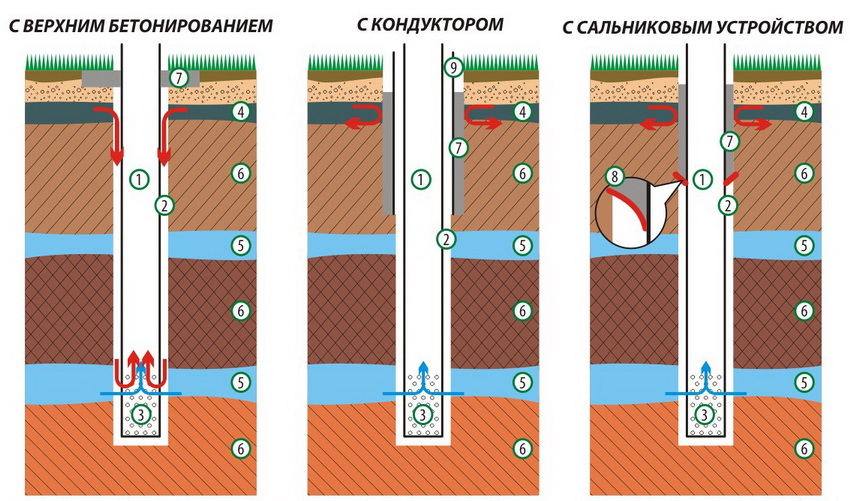
Well design options. 1-production casing, 2- annular space, 3 - filter part of the casing, 4 - "top water", 5 - aquifers, 6 - water-resistant strata (dense clays), 7 - cement filling, 8 - stuffing box, 9 - blind steel column (conductor)
At the first stage, it is required to dig a square pit with a size of 1.5 by 1.5 meters. You need to strengthen its walls with boards, pieces of plywood or chipboard. This will save the pit from landslides. In the middle of the pit, a one meter deep hole is made with a hand drill. This is necessary in order to set the drill string as accurately as possible.
A tower is placed above the dug recess, on which a column with pipes is suspended. The structure is lifted and lowered into the well using a winch. Periodically, the rod must be removed upward to clean the drill. Depending on the type of soil, the nozzles are changed:
- for clay and loamy soil, a coil drill is suitable;
- for sandy soil you need a drill spoon;
- the best choice in the case of hard soil and boulders is a chisel;
- loose sandy soil or quicksand will easily overcome the bailer.
Helpful advice! To carry out work on drilling an artesian well, a flat area of 4 by 12 meters is required. There should be no electrical wires within two meters of the drilling point.
Tips and rules for the operation of artesian wells
In order for the artesian well and all the equipment that provides the water supply to serve you for the full period, it is important to strictly follow the passport and instructions for servicing the artesian well.
In addition, you can extend your carefree use if:
- periodically check filters and replace them if necessary;
- do a water analysis at least once a year, and if the composition changes, the treatment plant should be optimized;
- under no circumstances try to independently solve any problems that have arisen - it is better to immediately contact the appropriate service;
- call a specialist immediately if the water pressure drops.
Despite the fact that the drilling of artesian wells is a process that requires long preparatory activities and significant financial costs, the result that will be obtained is worth it. Artesian water has a unique composition and purity, which benefits human health. The only downside to drilling is the cost of the process.

